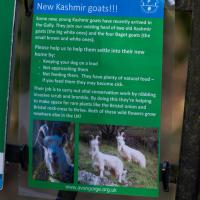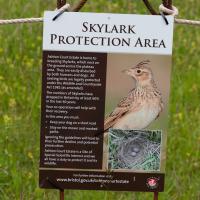Tagged: both
Autonomous Vehicle
14 Jul 2021
As it turned out, I didn't manage to get a coffee on my lunchtime coffee trip, as Imagine That were briefly shut down by a Covid-19 exposure notification (false alarm, it seems.) On the plus side, my trip was made worthwhile by spotting a couple of people from the University of Bath Mechanical Engineering Department testing an autonomous body-finding catamaran, which isn't a phrase I was ever expecting to write...
All the way to the marina, but my destination had disappeared! Lucy and Dan were fine and I saw the Imagine That horsebox back here and working the following morning.
Tags: Bristol Places UK onemilematt united kingdom cafe harbourside covid-19 floating harbour Spike Island Imagine That marina
Auto-Tags: Font Wood Brick Rectangle Brickwork Display device Signage Poster Hardwood Advertising Commemorative plaque Wood stain
Text Recognition Tags: The CAFE Dear customer, The OP We have had to close as a precautionary measure due to a potential exposure to the virus. We have both had negative lateral flow tests and are currently teeling wel but are wating on PCR test results before we can returm to work. All being well well hopefuly see you in a few days. You can check aur social media pages for updutes in the meantime: Serving Coffee r bites.♡ IND US @. IMAGINETHAT BRISTOL a CMAGINETHATBRISTOL M@MAGINE THATBRIS Instagram: eimaginethatbristal Facebook facebook.com/imaginethatbristol ... Lucy and Dan We THU: 8 -3 FRI : 8 - 3 SAT 9- 4 SUN 9-4 WWW. IMAGINETHATBRISTOL. COM The CAFE Dear customer, The OP We have had to close as a precautionary measure due to a potential exposure to the virus. We have both had negative lateral flow tests and are currently teeling wel but are wating on PCR test results before we can returm to work. All being well well hopefuly see you in a few days. You can check aur social media pages for updutes in the meantime: Serving Coffee r bites.♡ IND US @. IMAGINETHAT BRISTOL a CMAGINETHATBRISTOL M@MAGINE THATBRIS Instagram: eimaginethatbristal Facebook facebook.com/imaginethatbristol ... Lucy and Dan We THU: 8 -3 FRI : 8 - 3 SAT 9- 4 SUN 9-4 WWW. IMAGINETHATBRISTOL. COM
The more I research it, the more I find that Hotwells had far better transport links back in Victorian and Edwardian times than it has today. Along with buses that went to more useful places than the City Centre, there were trams, the funicular up to Clifton, the landing stage for paddle steamer services and two railway stations all within easy walking distance of me.
Today I took a day off work as preparation for doing the bookkeeping for my tax return1, and took a wander along to the site of what would have been my nearest station, Hotwells (or Clifton, as it started out in life), nestled in the shadow of the suspension bridge, the Bristol terminus of the Bristol Port Railway and Pier.
From there I wandered down the Portway, following the original line, until I got to the area around Sneyd Park Junction, where the tunnel from the slightly later Clifton Extension Railway joined up with this originally-isolated BPR line. Then I headed up to Clifton through the "goat gully" at Walcombe Slade, seeing the few above-ground bits of evidence of the tunnel (which is still in regular use) along the way.
It was a lovely day, and a good walk, and it was interesting to daydream of the times when I could have walked a few minutes from my flat down to Dowry Parade, caught a short tram ride to Hotwells Stations, and then headed from there to Avonmouth, perhaps even to board a transatlantic passenger service. The completion of the Clifton Extension Railway that linked the Avonmouth station with Temple Meads made relatively direct transatlantic travel from London via Bristol possible, with passengers travelling up from Paddington to Temple Meads, on to Avonmouth on the Clifton Extension Railway and Port Railway and Pier line, then perhaps catching a Cambpell's paddle steamer—which sometimes acted as tenders for large steamers—to a larger ship that was headed out for Canada, say.
1 I've learned that the best approach is to take two days off and deliberately do something that's not my bookkeeping on the first day, as otherwise I just inevitably end up procrastinating and feeling guilty on the first day no matter what. I have an odd brain, but at least I'm learning strategies for dealing with its strange ways as I get older...
2 Information mostly gleaned from Colin Maggs' The Bristol Port Railway & Pier and the Clifton Extension Railway, The Oakwood Press, 1975.
I did not see hide nor hair of a single goat the entire time I was in the goat gully. I clearly need to spend a bit more time there.
Tags: Bristol Places UK onemilematt united kingdom Goat Gully Gully Walcombe Slade
Auto-Tags: Green Nature Organism Grass Fawn Adaptation Terrestrial plant Font Grass family Advertising Wildlife Nature reserve Terrestrial animal Signage Tail
Text Recognition Tags: Goat news ... New Kashmir goats!!! Some new, young Kashmir goats have recently arrived in the Gully. They join our existing herd of two old Kashmir goats (the big white ones) and the four Bagot goats (the small brown and white ones). Please help us to help them settle into their new home by: Keeping your dog on a lead Not approaching them - Not feeding them. They have plenty of natural food - If you feed them they may become sick. Their job is to carry out vital conservation work by nibbling invasive scrub and bramble. By doing this they're helping to make space for rare plants like the Bristol onion and Bristol rock-cress to thrive. Both of these wild flowers grow nowhere else in the UK! www.avongorge.org.uk Goat news ... New Kashmir goats!!! Some new, young Kashmir goats have recently arrived in the Gully. They join our existing herd of two old Kashmir goats (the big white ones) and the four Bagot goats (the small brown and white ones). Please help us to help them settle into their new home by: Keeping your dog on a lead Not approaching them - Not feeding them. They have plenty of natural food - If you feed them they may become sick. Their job is to carry out vital conservation work by nibbling invasive scrub and bramble. By doing this they're helping to make space for rare plants like the Bristol onion and Bristol rock-cress to thrive. Both of these wild flowers grow nowhere else in the UK! www.avongorge.org.uk
Ticking Off a Pocket of Paths in Leigh Woods
03 Jun 2022
I managed to go for a wander a while ago that was meant to finish off a little tangle of paths in Leigh Woods, or at the very least finish off my wandering of the Purple Path there. And I managed to miss doing either of those things through some kind of navigational incompetence.
Today I woke up with a bit of a headache, feeling a bit knackered as soon as I dragged myself out of bed, but at least with the energy to realise that I'd be better off (a) going for a walk in what looked likely to be the last of the Jubilee weekend sunshine than (b) moping around the flat until it started raining, at which point I could mope more thoroughly.
I had a look at my map, considered going to Ashton Court, but remembered that there was a music festival there today, and instead found these little leftovers of Leigh Woods and decided to have one more try at walking them.
Tags: Ashton Court Estate Bristol Places UK onemilematt united kingdom ashton court conservation skylark
Auto-Tags: Bird Plant community Vertebrate Ecoregion Nature Beak Mammal Grass Adaptation Grassland Grass family Terrestrial plant Groundcover Feather Plant
Text Recognition Tags: SKYLARK PROTECTION AREA Ashton Court Estate is home to breeding Skylarks, which nest on the ground across the plateau area. They are easily disturbed by both humans and dogs. All nesting birds are legally protected under the Wildlife and Countryside Act 1981 (as amended) The numbers of Skylarks have dropped in Britain by at least 60% in the last 40 years Your co-operation will help with their recovery In this area you must: + Keep your dog on a short lead Stay on the mown and marked paths. ignoring the guidelines will lead to their further decline and potential prosecution. Ashton Court Estate is a Site of Special Scientific interest and we all have a duty to protect it and its wildlife. For further information vit www.bristol.gov.ukychtoncourtestate SKYLARK PROTECTION AREA Ashton Court Estate is home to breeding Skylarks , which nest on the ground across the plateau area . They are easily disturbed by both humans and dogs . All nesting birds are legally protected under the Wildlife and Countryside Act 1981 ( as amended ) The numbers of Skylarks have dropped in Britain by at least 60 % in the last 40 years Your co - operation will help with their recovery In this area you must : + Keep your dog on a short lead Stay on the mown and marked paths . ignoring the guidelines will lead to their further decline and potential prosecution . Ashton Court Estate is a Site of Special Scientific interest and we all have a duty to protect it and its wildlife . For further information vit www.bristol.gov.ukychtoncourtestate
I've been pretty awful at reading so far this year, apparently averaging about one book per month. That's a far cry from 2019, say, where I got through 41 books in the year. Today's wander was prompted by my rubbish reading, as I needed to go hand back some books to the library, because I'd managed to renew them so many times that I hit the limit on renewals. Oops. Several of them were still unread.
So, off to the Central Library for me, tail between my legs. On the way there I did my best to recreate a historical photo of Dowry Square; while I was in the area I walked under the adjacent Norman arch and poked around behind the Cathedral, and I also had a little diversion to the city centre and came back along the south side of the river, hitting some trouble with the lock gates as I finally crossed the harbour back towards home.
A bit more detail if you fancy it.
Tags: Bristol Places UK onemilematt united kingdom City Centre Saint Nicholas Market St Nicholas Market St. Nicholas Market Corn Street old city
Auto-Tags: Wood Font Wall Landmark Commemorative plaque Tree History Signage Memorial Metal Public utility Interior design Kitchen utensil Idiophone
Text Recognition Tags: THE CORN EXCHANGE CLOCK The clock on this building with an extra minute hand recalls early Victorian days, when Bristol was in two minds about the correct time. Although today we take Greenwich Mean Time or British Summertime for granted before 1880 no standard time existed in the British Isles. Every city had its own local time, reckoned by the sun and signed by church bells. Bristol lies 2 degrees, 36 minutes west of the Greenwich Meridian and so the sun reaches its noon nearly peak 11 minutes later than in Greenwich. Before the growth of railways, most people expected to spend their lives close to home. Travel by stagecoach or ship was slow and uncomfortable. Timetables were vague. For Bristolians a change came in June 1841, when the first through train from London pulled into Temple Meads Station. Brunel's Great Western Railway began to tempt people to travel, now they could go to London in hours rather than days. The Railways ran on London time (Greenwich Mean Time). If you wanted to catch a train at noon from Temple Meads you had to remember that it would pull out at 11:49 Bristol Time. To help Bristolians catch their trains, Bristol Corporation arranged for the main public clock on the Corn Exchange to show both local and Greenwich Mean Time (Railway Time) with two minute hands. Other clocks in Bristol adopted the same compromise, In September 1852 Bristol adopted GMT and Bristol time became the same as Lond THE CORN EXCHANGE CLOCK The clock on this building with an extra minute hand recalls early Victorian days , when Bristol was in two minds about the correct time . Although today we take Greenwich Mean Time or British Summertime for granted before 1880 no standard time existed in the British Isles . Every city had its own local time , reckoned by the sun and signed by church bells . Bristol lies 2 degrees , 36 minutes west of the Greenwich Meridian and so the sun reaches its noon nearly peak 11 minutes later than in Greenwich . Before the growth of railways , most people expected to spend their lives close to home . Travel by stagecoach or ship was slow and uncomfortable . Timetables were vague . For Bristolians a change came in June 1841 , when the first through train from London pulled into Temple Meads Station . Brunel's Great Western Railway began to tempt people to travel , now they could go to London in hours rather than days . The Railways ran on London time ( Greenwich Mean Time ) . If you wanted to catch a train at noon from Temple Meads you had to remember that it would pull out at 11:49 Bristol Time . To help Bristolians catch their trains , Bristol Corporation arranged for the main public clock on the Corn Exchange to show both local and Greenwich Mean Time ( Railway Time ) with two minute hands . Other clocks in Bristol adopted the same compromise , In September 1852 Bristol adopted GMT and Bristol time became the same as Lond



